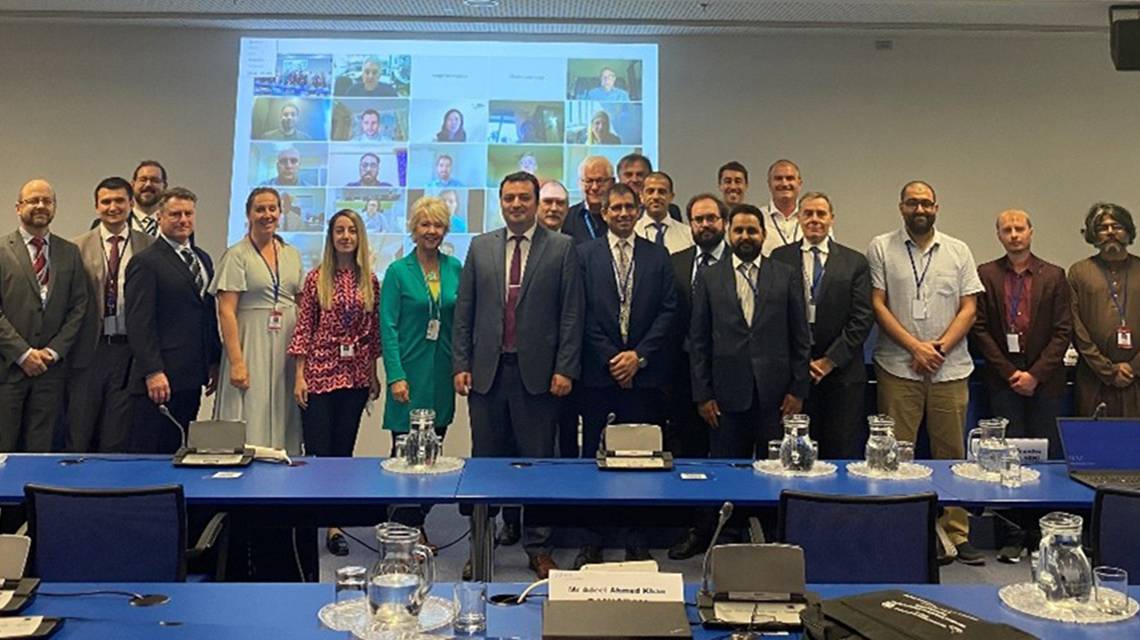Increased international co-operation, harmonisation of legal and regulatory aspects, and a holistic approach for safety, security and safeguards in the design of small modular reactors (SMRs) were among the key issues discussed at a recent IAEA technical meeting.
"With many SMRs still being in an early design stage, there is a unique opportunity to comprehensively integrate all three elements of safety, security and safeguards - the so-called 3S concept - in the design of innovative reactors," said Lydie Evrard, IAEA Deputy Director General and Head of the Department for Nuclear Safety and Security, in her opening remarks.
The potential challenges and synergies between the three fields have been the focus of IAEA hosted events, which have included a webinar held in early February and a Technical Meeting on Safety, Security and Safeguards (3S) in the design of SMRs that took place in June. At these meetings, the benefits of addressing the interfaces and creating synergies between safety, security and safeguards from the early design stage of advanced reactors, such as SMRs, were highlighted.
More than 100 participants from 29 countries and two international organizations attended the technical meeting from 1 to 3 June, to discuss their experiences and ideas and share various perspectives on 3S by design, such as regulatory approaches, industrial considerations, designer challenges and research and development considerations.
"This meeting is at the forefront in bringing 3S by design concepts to the regulators," said Cynthia Jones, Ph.D., the U.S. Nuclear Regulatory Commission's Senior Technical Advisor for Nuclear Security. "It is also important that the IAEA open up this topic to designers and new applicants, so that they know the IAEA can be a source of information that they can also go to for advice on the steps needed for international safeguards."
3S - synergies
Meeting attendees also shared views on possible solutions to overcome 3S challenges. These included creating synergies between the three disciplines from the very initial stage of the SMR design, such as ensuring that intrinsic safety features and safeguards considerations are built-into reactor designs. Potential areas of synergy included optimal design solutions; fuel design and manufacturing elements; regulatory frameworks that focus on the integration of safety, security and safeguards; nuclear material accountancy and access control.
"There was recognition of the need to actively involve all stakeholders, and to also raise awareness and understanding among experts in the field of nuclear safety, security and safeguards," said Shahen Poghosyan, an IAEA nuclear safety officer.
Participants also identified and recommended actions for raising awareness about the 3S concept. These included the provision of IAEA guidance and recommendations on 3S by design; drawing stakeholder attention to consideration of 3S interfaces in design safety review missions; conducting capacity building activities on 3S, and taking a holistic approach to risk assessments.

The participants of the technical meeting on safety, security, and safeguards by design for small modular reactors hosted at the IAEA headquarters. (Photo: W. Li/IAEA)
"The need for a coordinated approach to safety, security and safeguards is present throughout the nuclear fuel cycle, and is especially important for innovative SMRs," said Kory William Sylvester, Director of the Division of Concepts and Planning, IAEA Department of Safeguards. "First-of-a-kind use of certain plant layouts, core designs, fuel materials, and supply arrangements will require new safeguards approaches and, in some cases, technologies."






